Timka Szoke
Your education: Secondary School of Visual Arts (Sculpture); Simultaneous Fine Arts School (Stained Glass Design, Tiffany Glass Design, Enamel Design); Budapest Metropolitan University, Art Faculty (Graphic Design, Painting)
Describe your art in three words: Vivid · Fairy Tale · Psychedelic
Your discipline: Drawing, Painting, Sculpture
Website | Instagram
Your works often blend Renaissance and Baroque aesthetics with pop-surrealist elements. How do you balance these historical influences with modern visual language?
These two eras are extremely inspiring to me, as is Gothic.
The characteristics of the given eras also play a role in the conception of a new image. For example, from the Renaissance, the effect of light and shadow, the natural landscape serving as the background of the figure/portrait, and the beauty features of the given era, such as the hairstyle, which for me is most evident in the depiction of strands of hair falling softly, naturally, in waves.
And from the Baroque, the realization of fairy-tale, sometimes illusion-creating, charming, sometimes mystical themes is formulated in my mind. The illusion turns into a special reality, as if we were entering an enchanted dimension. Furthermore, I complete the composition with the characteristic, decorative motifs and elements of the Baroque. I combine these with my own style, often displaying them in my images in a collage-like manner.
To answer this question, one of my works like that is “The Countess”, a mixed media painting inspired by Renaissance, Baroque and a bit Gothic, which is an illusion of a stained glass painting. The central element is a female portrait winking at us in typical Renaissance attire, between symmetrical, richly decorated columns. The popsurrealism character of the composition is given by the specific facial expression, I wanted to break the seriousness and drama of Renaissance stained glass paintings with playfulness/gag, and also with a brighter color palette.
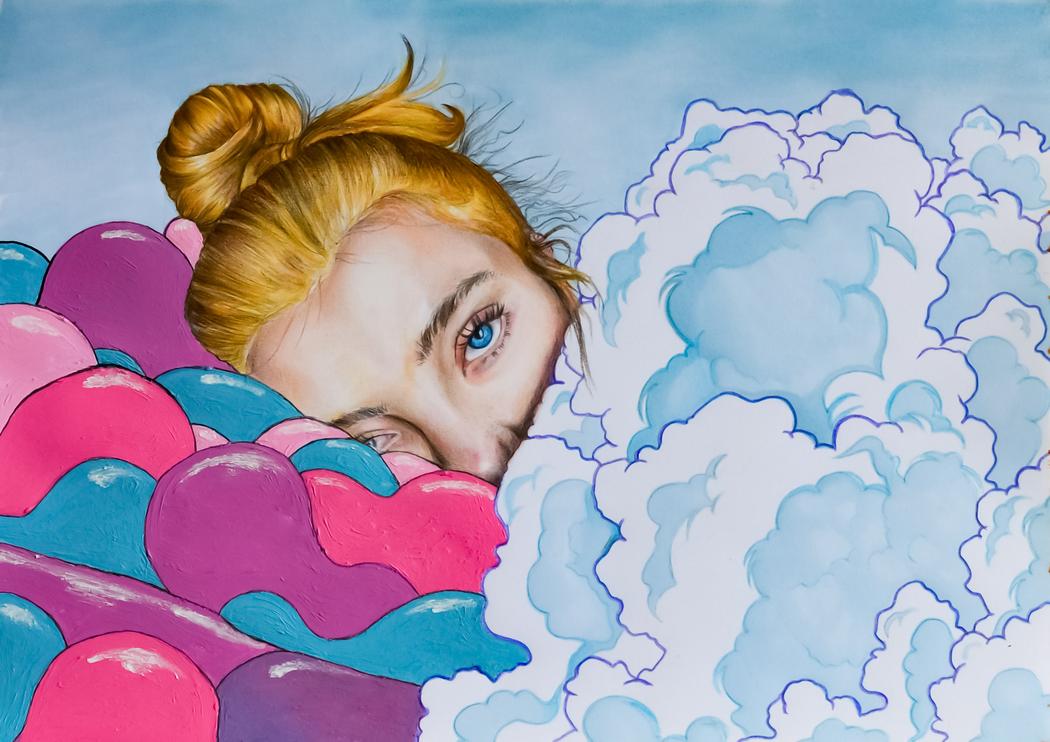 Timka Szoke | Just Asking For A Little More Time | 2023
Timka Szoke | Just Asking For A Little More Time | 2023
Many of your portraits feature strong emotions and expressive facial mimicry. Why is capturing human expression so important in your work?
I have always been fascinated by portraits in painting, it is my favorite means of expression because it is much more expressive to convey a subject through facial features.
I find the different emotions that appear on the human face amazing. It is amazing how the facial muscles work and how we are able to show emotions and thoughts. During a conversation, all feelings are shown on our faces because sincere facial expressions make communication authentic.
One of my favorite themes is depicting instinctive basic emotions such as joy, surprise, interest, anger and sadness in my work. As many facial features exist in the world, the same feelings can appear in as many ways because no two faces are the same. Our specific features give us our character, which makes us unique from everyone else, and these character traits are all so special. What I like to observe in people (among other things) is the movement of their eyebrows during communication. The frontalis and the adductors of the eyebrows together can enhance the expression of a wide range of emotions, like an essential spice without which the expression of emotions would not be so dramatic. So, it’s amazing how nature created this.
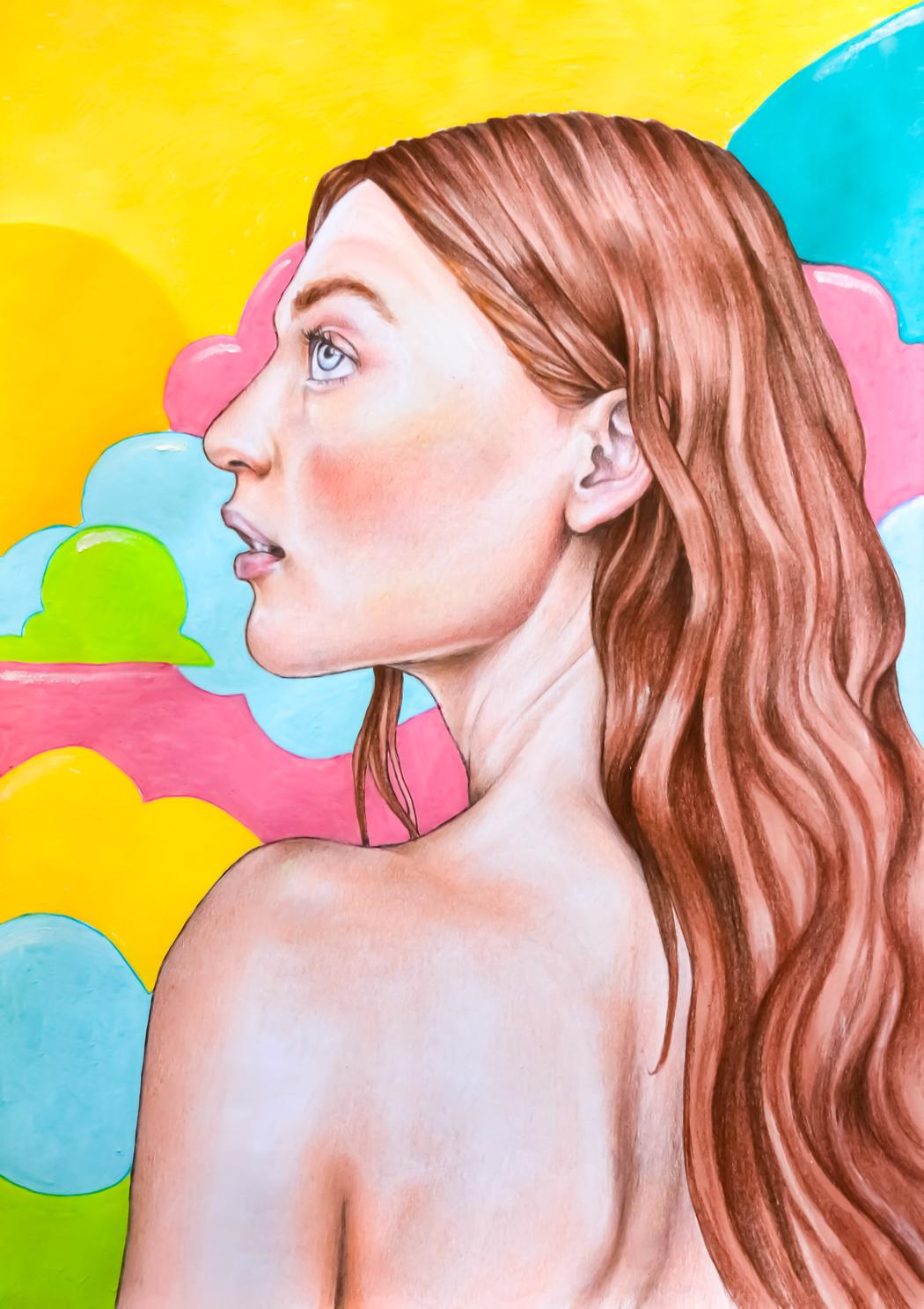 Timka Szoke | Valhalla Calling Me | 2023
Timka Szoke | Valhalla Calling Me | 2023
You mention being inspired by both classical art and comics. How do you see the dialogue between these two worlds in your paintings?
I combine the styles of classical paintings with a comic-like presentation. I am a great lover of Western and Asian comics, I passionately collect volumes of my favorite manga and classic comic artists and my favorite stories. For example, I wrote my university thesis on the development of manga, which developed from Japanese scrolls/woodcuts, and I was fascinated by the evolution of this art style. Of course, I feel the same way about American and European comics.
In classical art, a significant part of portraits did not feature the depiction of certain facial expressions, which artists began to better depict in the 20th century, for example.
In this regard, Pop art initiated the use of typical features of comics as a painting theme, as did Roy Lichtenstein and Andy Warhol.
For my part, the dialogue between classical art and comics is represented by breaking the rules of the usual trends. Here I am thinking of more pronounced contours, more vibrant colors, the expression of emotions through facial expressions, and the presentation of sets and motifs related to the interaction of the characters in the composition, which would not work without each other.
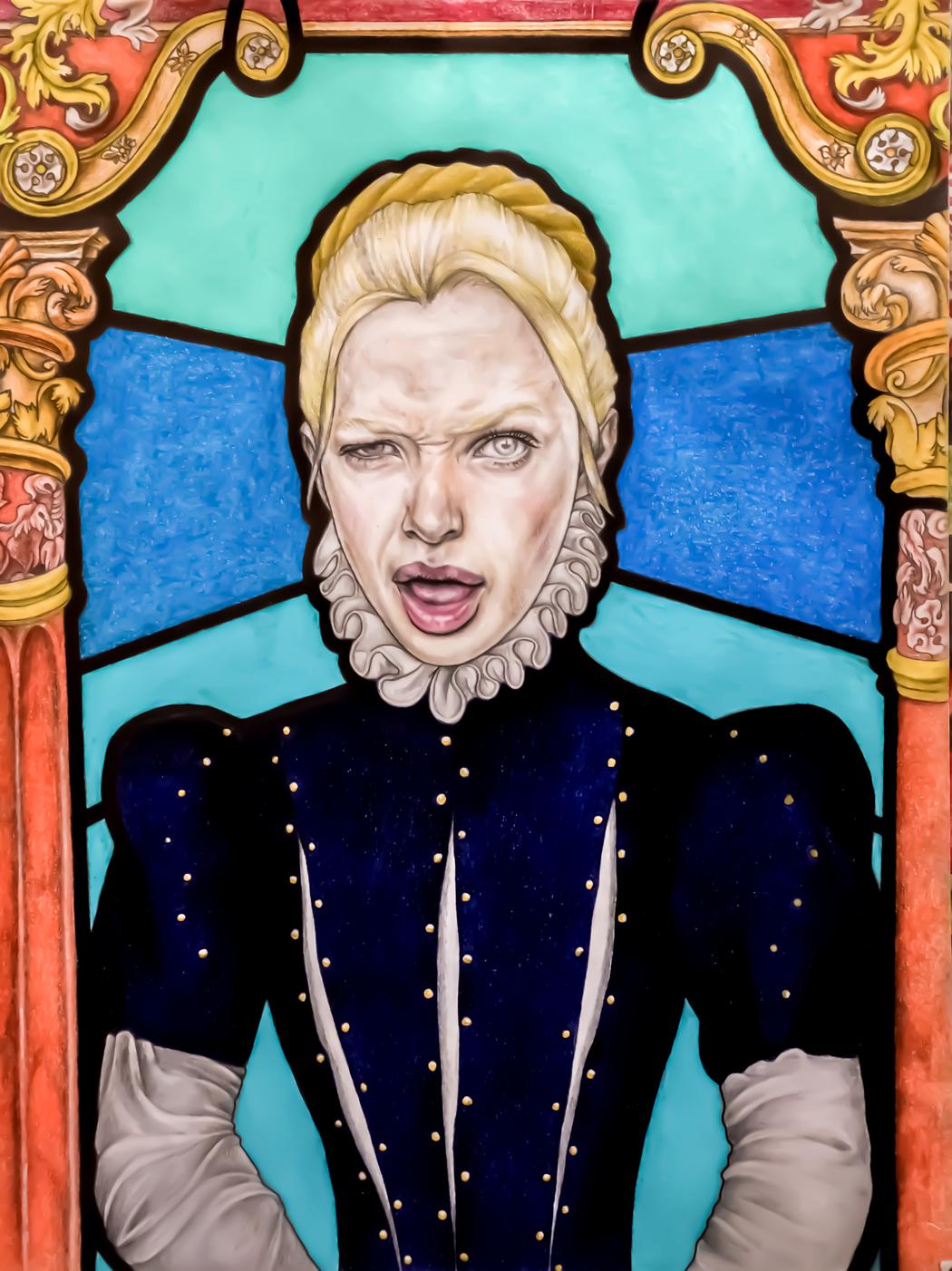 Timka Szoke | Countess | 2019
Timka Szoke | Countess | 2019
Color seems to play a major role in your compositions. How do you choose your palettes, and what emotional meaning do colors have for you?
I remembered two quotes from Goethe on color theory:
“Colors are in the light.”
“Colors are the deeds and sufferings of light.”
For me, colors play an extremely important role in my paintings. Certain feelings of mine have their own nuances. I express the cavalcade of feelings in my head with these nuances, without them the composition would be dead, because colors give that indispensable vibration, magic, energy boost with which they form a symbiosis.
When a theme develops in my thoughts, which is either inspired by an external stimulus or an idea that has been preoccupying me for a long time, then the colors of the composition appear first and only then the figure, the character himself, which although plays the main role, would be empty without the background.
The choice of color palette depends on my mood, what exactly I want to express. I like to use pastel colors the most, because they always calm and fill me up, and they also fit perfectly with most of the topics I have in my head.
A good example of this is my painting “Candy girl”, which I painted during a difficult, sad period of my life, and it was precisely the concentrated use of these pastel colors that started to shake me out of this gloomy, melancholic state. This gave the additional positive impulses to new and new inspirations, several of which I realized.
So, back to the point, colors have amazing power.
Several of your works evoke dreamlike or fantasy atmospheres. What role does imagination play in your art?
Imagination is the essence of my art. I couldn’t exist without it, as I’ve always been a very dreamer character. My teachers and classmates at school often told me that I was “enchanted”, and they were right.
Any story I read or heard as a little child immediately appeared visually in my head, as if there was a slide show in it that illustrated the given information.
I really loved and still love various fairy tales, mythologies, legends, they have an extremely inspiring effect on me. Fantasy is one of my favorite genres, it is an inexhaustible source of inspiration for me. This style creates a dimension in a person in which she can most fully realize herself, because the knowledge that anything can happen, we can be anyone or anything we want, because there are no limits to imagination. So this takes our thoughts further into a dream-like world, where our story, the idea that will become the muse of my paintings and drawings, continues to take shape.
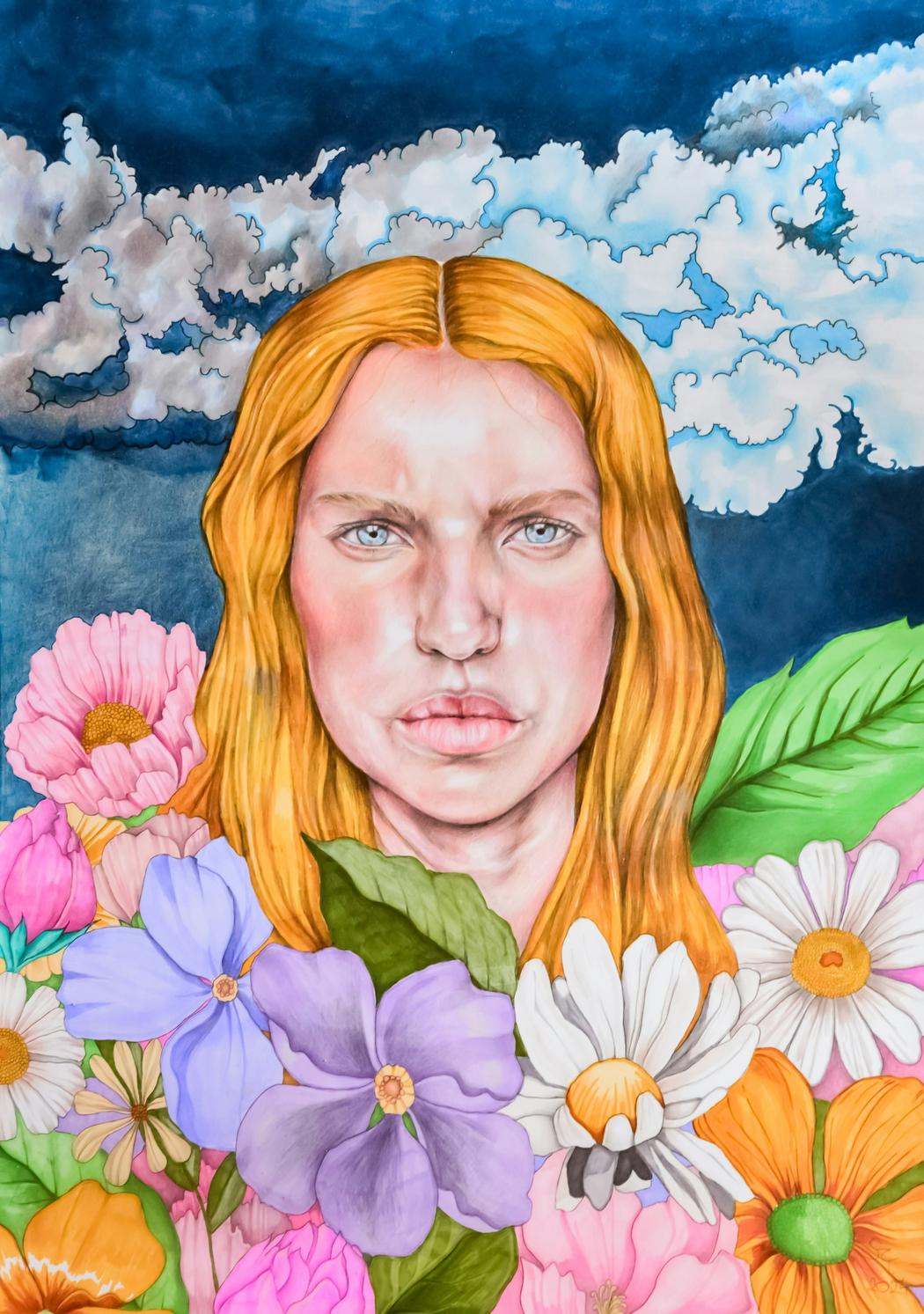 Timka Szoke | I Am Out Of Line | 2024
Timka Szoke | I Am Out Of Line | 2024
How do you approach the representation of femininity in your portraits?
I strive for naturalness. Every artist has their own ideal of beauty, and so do I. I like to portray features in portraits that give character to the face and show a natural, unique charm. I don’t want to cater to the expectations of a specific beauty trend, but rather combine a bit of a more classic, timeless femininity with a more realistic look. What I mean by this is that I don’t want to apply an overly idealized aesthetic, but rather a realistic depiction in my work. One such portrait is my painting “Jeanne”, which was inspired by the figure of Joan of Arc. I really loved working on this image because I tried to portray this iconic hero in her naturalistic reality, who (in my opinion) was a completely natural and incredibly brave, special young girl. Every time I read about her, I imagined a bold, feisty, yet sophisticated character, a bit like a modern-day comic book action heroine, but there’s so much more to her. When I look at her in a contemporary context, she’s a stereotype-defying, rebellious, cool, strong, feminist woman who stood by her beliefs to the end in an extremely dark, cruel historical era. For me, she’s clearly an extremely important, exemplary female character.
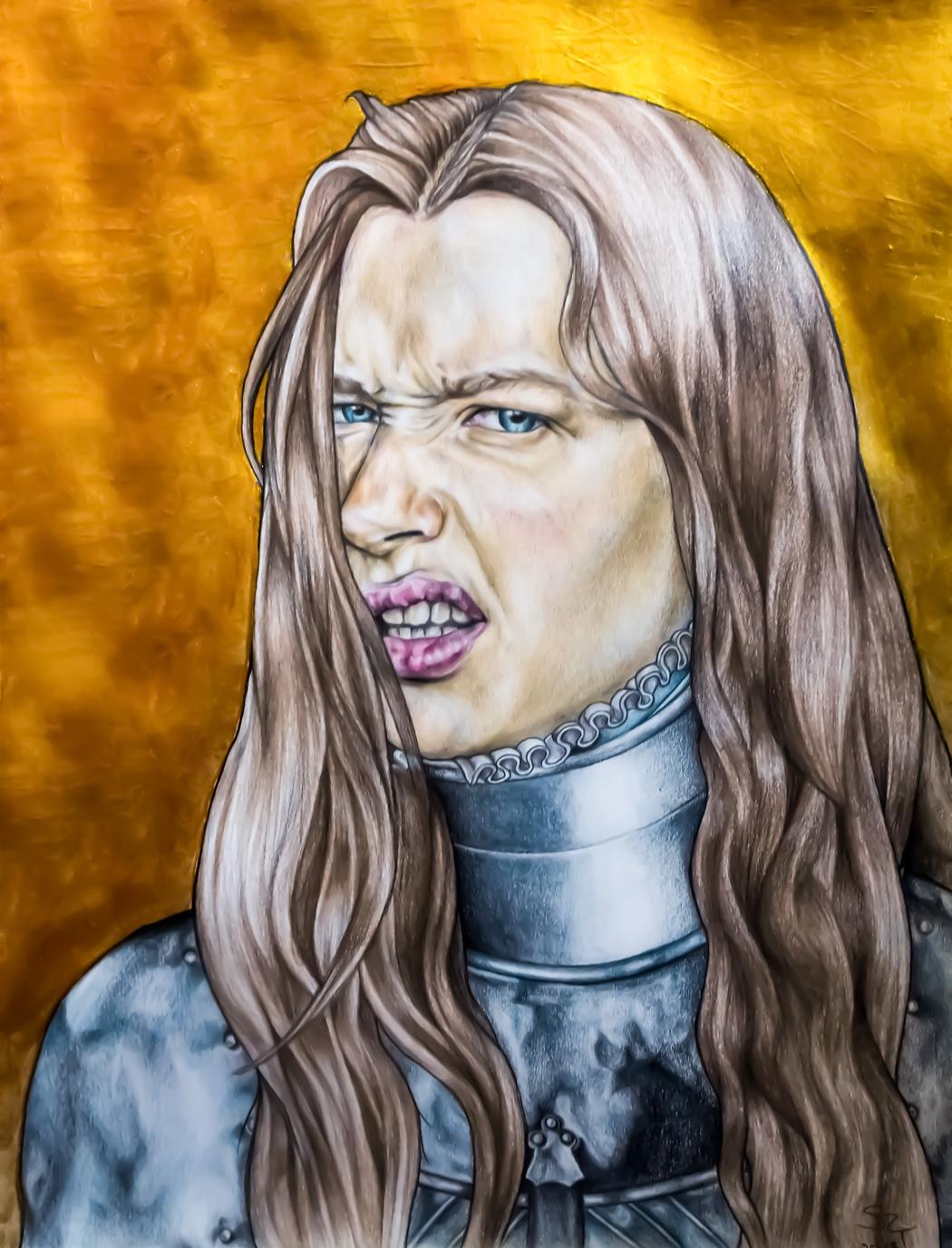 Timka Szoke | Jeanne | 2018
Timka Szoke | Jeanne | 2018
You studied stained glass and enamel design — do these early experiences influence the way you structure light and form in your paintings?
I studied sculpture at the Secondary School of Visual Arts for five years, where I expressed my ideas in a plastic way. This was a great help in thinking not only in a plane (2D), but also in space. Then came stained glass design, which was a different direction. I was always very interested in painting, graphic design (illustration) and how I could take it further in combination with other materials, in this case with flat glass and metal sheet, as well as enamel mud.
The biggest challenge in these processes is that you have to prepare the surface you want to paint on and burn it several times to achieve the final result you imagined. The sgraffito scratch technique of fire enamel reminded me of copper etching when I later studied graphic design, so I had a bit of a deja vu feeling. I felt the same way in the painting department, because it reminded me a bit of the period when I was learning to design and paint stained glass. That is why my stained glass-like painting compositions were born, which I designed with the same division as I would make with flat glass.
In summary, these studies of mine have significantly influenced my painting, my adaptation to materials, and my countless experiments with light-shadow and form effects, which I try to continuously develop with great passion.

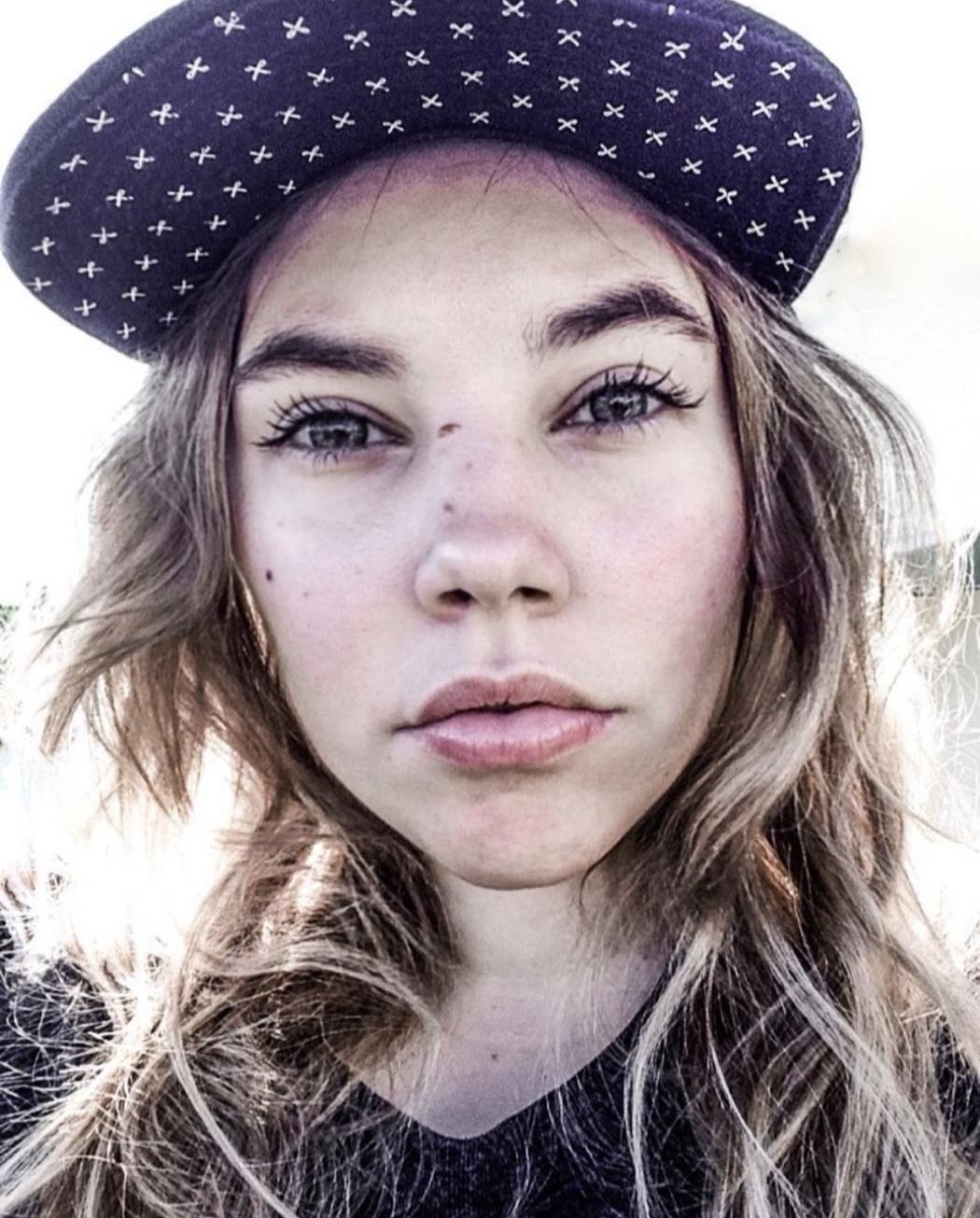
Leave a Reply